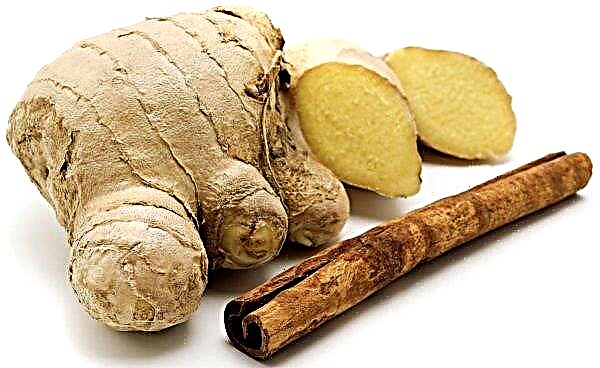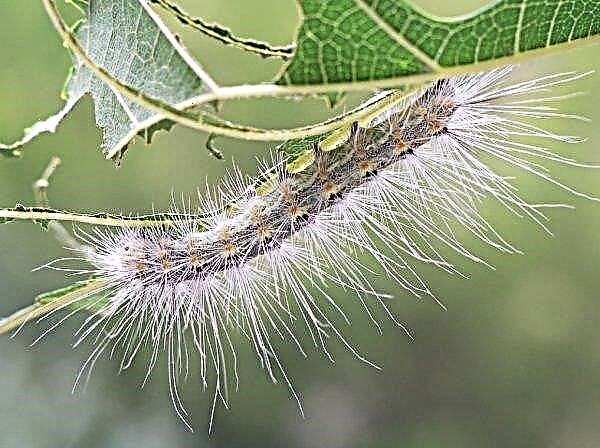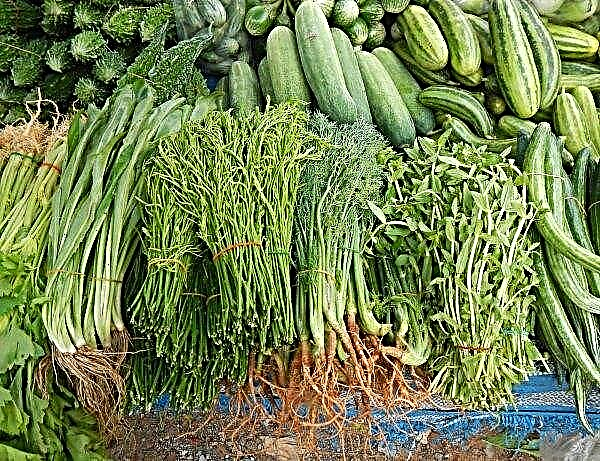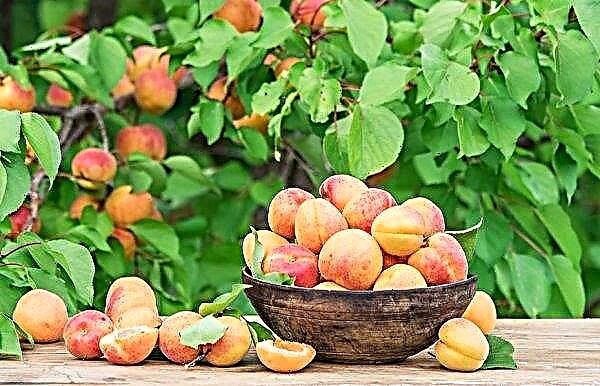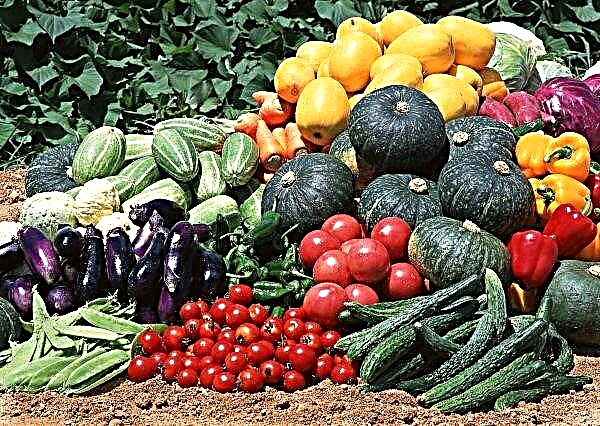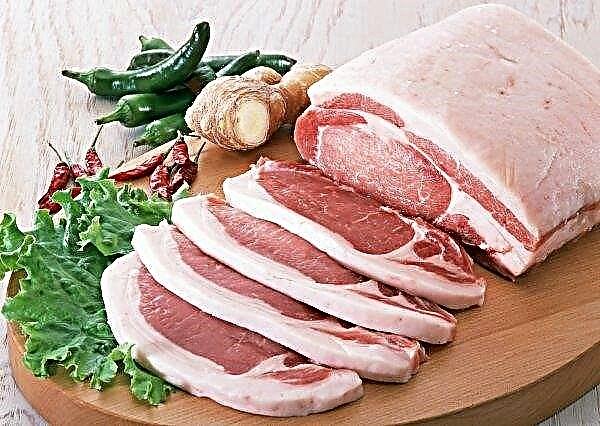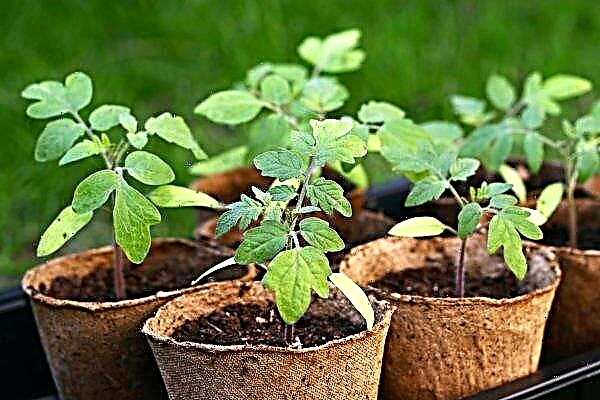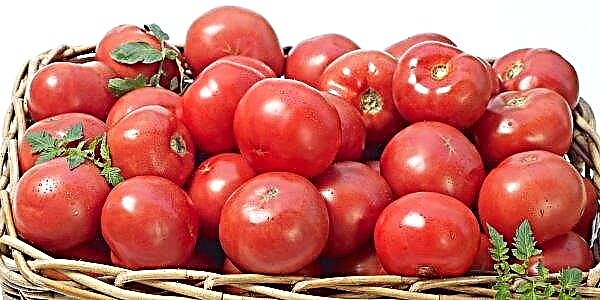The situation when leaves turn yellow in tomatoes should alert the owner of the garden. There are a number of possible causes for this problem. Negative influence on tomatoes could have had both improper care, as well as pests or various diseases. That is why, before looking for a solution to a problem, it is necessary to determine the cause of its occurrence.
Why leaves turn yellow on tomatoes, and what should be done
The problem of yellowing leaves in tomatoes is usually associated with several main reasons. These include a violation of the microclimate, improper watering, invasion of pests, some diseases, lack of elements and some others.
Microclimate
A common cause of yellowing of leaves in tomatoes is a violation of the microclimate. When a problem occurs, you should pay attention to 3 main factors.
- Temperature. The norm of the temperature regime during the day should be 20–25 ° С, and at night the indicators should not fall below 18 ° С. A sharp temperature jump in any direction and intense exposure to cold or heat can affect the condition of tomatoes. At high temperatures, wilting is possible, which is first reflected on the leaves. Low temperature indicators negatively affect both the green part of the tomato and the rhizome. If the problem lies in hypothermia, then the upper and lower leaves turn yellow, while a bluish color may appear.
- Humidity. The optimum humidity for tomatoes is 60–70%. High humidity leads to yellowing of the leaves at the same time as they rot. A slightly better plant tolerates a dry climate, but too low levels of moisture in the air can also be detrimental. Twisted upper leaves, which also turn yellow and dry, will talk about such a problem.
- Lighting. Diffused light, which is provided in greenhouse conditions, is the best option for tomatoes. If they are grown in open ground, there may be a problem of intense exposure to sunlight. To solve the problem, you can install a canopy, best of white fabric, so as not to completely block the access of light to the garden. A low level of illumination can also lead to yellowness of leaves in seedlings.
Important! A combination of low temperature and high humidity should be avoided.
The solution to the problem in this case is the restoration of a normal microclimate and its subsequent maintenance. If the growing conditions are in the optimal range, then the reason should be sought in other factors.
Wrong watering
The damaging effects of critically high and low humidity are directly dependent on watering. If the plant receives too much moisture, decay may occur in the form of yellowing leaves. And in case of insufficient soil moisture, the green part will begin to dry.
And in case of insufficient soil moisture, the green part will begin to dry.
Did you know? The root system of the tomato spreads in the soil 1 m deep and 2.5 m in diameter. Due to this, tomatoes absorb moisture well and do not need daily watering.
In order to avoid the occurrence of such situations, watering should be performed in accordance with certain rules:
- water tomatoes need to be plentiful;
- watering should be infrequent (2 times a week);
- each tomato bush should receive about 3 liters of water;
- water must not be allowed to fall on leaves and stems; water should be watered near the root;
- water should be warm;
- The best period for moistening the soil is considered morning or evening.
Pests
Yellowing foliage may indicate an attack on the plant pests.
Among the main ones, one can distinguish:
- spider mites (if the leaves turned yellow pointwise);
- whiteflies (before the plants dry, the leaves turn black);
- aphids (located on the bottom of the leaves).
Pests need to be identified on time in order to decide the better to process the tomato. The faster the plant is sprayed, the more effective the result. The drug is selected individually. Among suitable means, one can distinguish the following:
Among suitable means, one can distinguish the following:
- Inta-Vir;
- "Spark";
- "Biotlin";
- "Actofit";
- "Bitoxibacillin";
- "Verticillin";
- "Metarizine";
- "Aktarofit."
Important! Processing must be carried out according to the instructions.
If desired, you can use folk remedies. One of these methods is the use of laundry soap. There are several types of homemade drug recipes. To combat whiteflies and spider mites, it is advised to soap the affected areas or spray with a soap solution.
Even a one-time use can help. If there is no result, the procedure should be repeated after 6-7 days.
The removal of aphids involves the preparation of a more complex product from soap and ash.
To do this, you will need:
- ash - 150 g;
- water - 0.5 l;
- soap - 25 g.
 Cooking method.
Cooking method.- Rub the soap on a grater.
- Sift the ash.
- Boil water.
- Add ash to boiling water and keep on fire for 30 minutes.
- Remove from heat, cool and strain.
- Dilute the mixture in 1 bucket of water.
- Add soap.
- Mix thoroughly until smooth.
With this tool, the affected areas are treated.
To prevent the appearance of pests, the following measures should be taken:
- maintaining a stable and optimal microclimate;
- timely top dressing;
- loosening of soil;
- weeding on time.
Diseases
The main diseases, the symptoms of which are yellowing of the foliage, are fusarium and late blight, which are fungal. To fight the infection, you need to diagnose the disease and determine the treatment method.
Fusarium
The reason for the development of fusarium is the spread of the fungus. Of the symptoms of the disease, one can distinguish the following:
Of the symptoms of the disease, one can distinguish the following:
- yellow, dry, swirling leaves in all parts of the tops;
- cutting the stem, you can see thin veins of brown color;
- the first signs appear in the lower part of the plant.
There is no specific treatment; the affected bush must be removed from the garden and burned.
Late blight
The main symptom of the disease is the drying of the leaves, which acquire a yellow-brown color.
Did you know? Blight was the main culprit for the European potato crisis, the Great Famine in Ireland and the potato famine in Scotland in the 1840s.
Blight is affected by bushes affected by late blight - a fungal infection that can spread from one plant to another. Therefore, for treatment, you must first remove the dried leaves, and then process the plants.
For these purposes, you can use:
- "Fitosporin";
- "Kuproksat";
- "Trichophyte";
- "Quadrice";
- "Bravo";
- Previkur;
- "Infinito";
- "Concento".
 A popular alternative method is milk-iodine solution.
A popular alternative method is milk-iodine solution.To prepare it you will need:
- iodine - 5 drops;
- milk - 0.3 l;
- water - 3 l.
All ingredients should be mixed. This drug needs to be sprayed on the green part of the tomato stands.
Lack of elements
The cause of dry foliage may also be a lack of necessary elements. Most of all, the plant suffers from a deficiency of iron, sulfur, magnesium, potassium and nitrogen.
Iron
Yellowness of leaves with green veins and wilting of the upper part indicates iron deficiency. In the future, the development of chlorosis may occur. To prevent it, it is necessary to conduct treatment with iron sulfate.
For this we need:
- water - 10 l;
- vitriol - 5 g.
Bushes are sprayed with this solution 2 times with an interval of 1 week.
Sulfur
A symptom of a lack of sulfur is to brighten the leaves to a yellow-green hue with the appearance of reddish veins. For treatment, ammonium superphosphate should be used as top dressing. They water the soil, after dissolving the drug in water. Feeding is preferably carried out when planting and during flowering.
Magnesium
If spots of a yellowish tint appear between the veins on the sheets, this indicates a lack of magnesium. The leaves themselves are twisted. In this case, it is necessary to fertilize with magnesium sulfate.
For spraying you need:
- water - 10 l;
- magnesium sulfate - 20 g.
With this tool, process the tops. If it is necessary to fertilize the soil, magnesium sulfate should be used in double proportions.
Potassium
Potassium deficiency is manifested through yellowing and drying of old foliage. New leaves do not dry, but twist. With these symptoms, you need to treat the soil or tops with potassium sulfate.
To prepare the solution you will need:
- water - 10 l;
- potassium sulfate - 40 g.

Nitrogen
Nitrogen deficiency is very fatal: the stems and leaves become thinner and yellow. For treatment, it is necessary to use nitrogen top dressing or manure.
To prepare manure fertilizer, it is necessary to mix the components in the following proportions:
- water - 10 l;
- manure - 1 kg.
This tool is used to fertilize the soil.
Other reasons
In addition to the above, there are several other reasons why leaves turn yellow in tomatoes.
These include:
- damage to the root system;
- lack of space for the formation of rhizomes;
- natural adaptation to the terrain and conditions (the lower part turns yellow and falls).
It should be noted that tomatoes growing in a greenhouse are more vulnerable. This is due to possible violations of the microclimate and difficulties in creating optimal humidity. Also, fungi that cause fusarium can be stored in one area for a long time, which in greenhouse conditions is more likely than in the open air.
Preventative measures
Having studied all the possible causes of yellowing leaves in tomatoes, you can derive the basic rules for the prevention of such an ailment.
These include:
- maintaining the right microclimate in the greenhouse;
- protection from the scorching sun with a canopy;
- compliance with irrigation rules;
- planting bushes at a distance of 30-40 cm from each other;
- timely weeding and loosening of soil;
- proper fertilizer.
Yellow tops in tomatoes can indicate various disorders - from problems with the microclimate to fungal infections. Prevention and timely resolution of this problem will allow you to successfully get rid of leaf spoilage and get a rich tomato crop.

